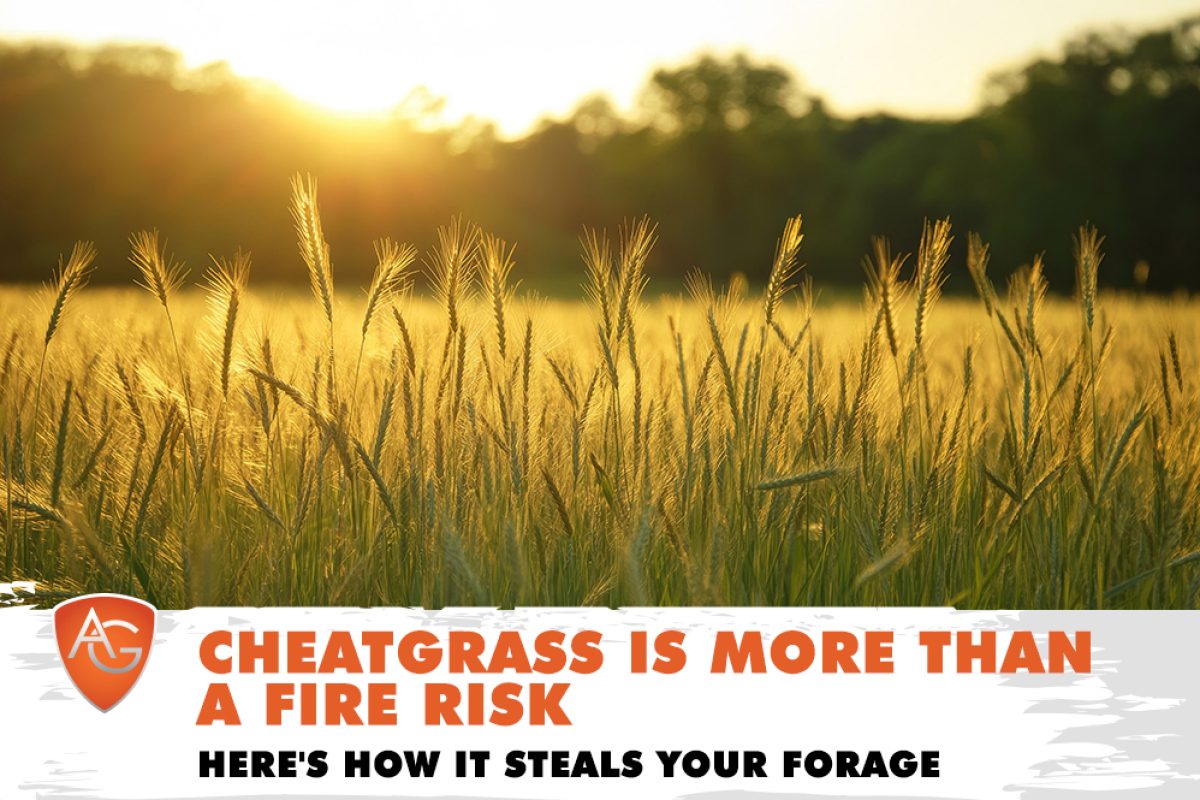Overview: Cheatgrass isn’t just a fire hazard — it’s robbing your pasture of valuable forage. Learn how it spreads, what it’s costing your livestock, and how local hay can help fill the gap. Read on!
Most folks around here know cheatgrass is a wildfire threat — and that’s true. But fire danger is just one part of the story. For ranchers in Laramie County, the bigger concern might be how cheatgrass quietly robs you of graze-able, high-quality forage season after season.
Here’s what this aggressive invader is really doing to your land — and what you can do about it.
It Greens Up Fast… Then Disappears
Cheatgrass has one sneaky advantage: timing. It greens up early in the spring, often weeks before our native grasses wake up. That might look like a benefit at first glance — until you realize it dries out just as fast. By the time your livestock are ready to graze, cheatgrass is brittle, low in nutrition, and done competing.
Meanwhile, it’s already pulled moisture and nutrients out of the soil — leaving your better forage grasses starved and struggling.
Less Forage. More Weeds. Bigger Problem.
Every square foot cheatgrass occupies is a square foot your cows aren’t grazing. It pushes out perennials, invites erosion, and leaves your pasture looking thin and tired. Over time, you’ll see declining forage yields, more bare ground, and reduced carrying capacity.
That means more reliance on purchased hay — and a pasture that’s no longer pulling its weight.
It’s Not Just a Fire Problem — It’s a Forage Thief
Yes, cheatgrass fuels wildfires. But the bigger issue for your operation is how much it cuts into your bottom line. By hijacking soil moisture, crowding out productive species, and creating bare patches that open the door for even worse weeds, cheatgrass slowly shifts your pasture from an asset to a liability.
What You Can Do
1. Know When to Hit It: Cheatgrass sets seed early — usually by late spring. That means your window for control is short. Mowing, grazing early, or using pre-emergent herbicides can help knock it back before it goes to seed.
2. Feed Strategically: If you’re supplementing because cheatgrass has lowered your pasture output, the right hay can make up the difference. Whether it’s straight alfalfa, Orchard/Brome mixes, or Wyoming Timothy/Garrison, choosing nutrient-rich hay helps keep your herd in good condition while you work on pasture recovery.
3. Rebuild What’s Been Lost: Reclaiming cheatgrass-dominated ground takes reseeding with strong perennials and giving them a chance to establish. It also means managing grazing pressure — and giving your best grasses the time they need to return.
We’re Here to Help You Fill the Gap
At All Around Ag, we understand the forage losses cheatgrass causes. That’s why we keep our barns stocked with dependable hay options for every stage of your operation — from cow hay to high-end Timothy grass. If your pasture’s been hit hard, we can help bridge the gap while you get things back in shape.
Cheatgrass may be small, but its impact on your forage program is anything but. Treat it like the threat it is — not just for fire, but for feed. With a sharp eye and a solid plan, you can take your pasture back.
